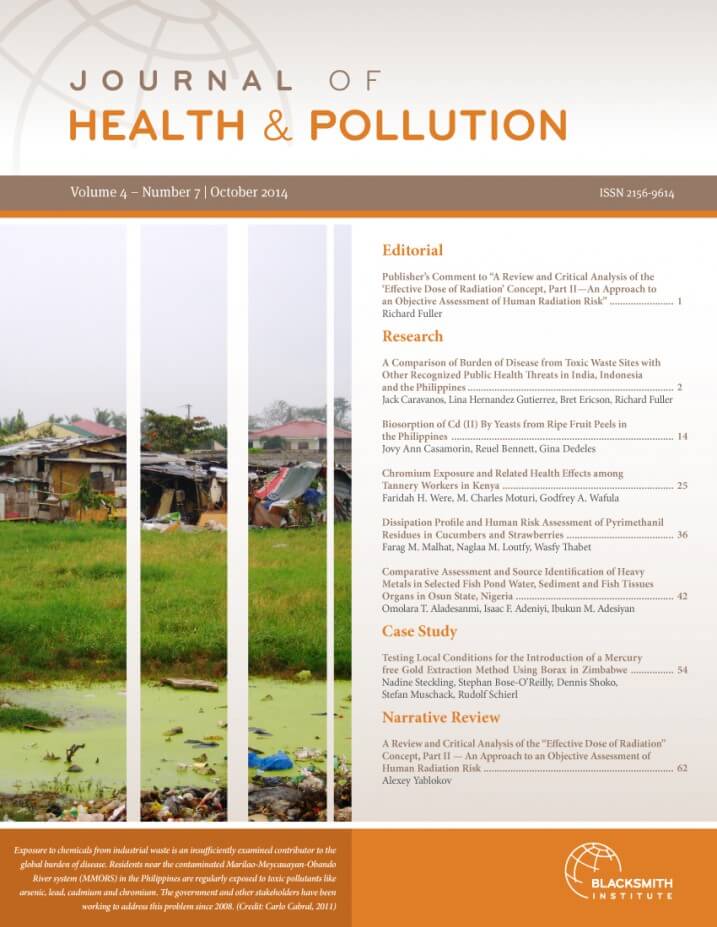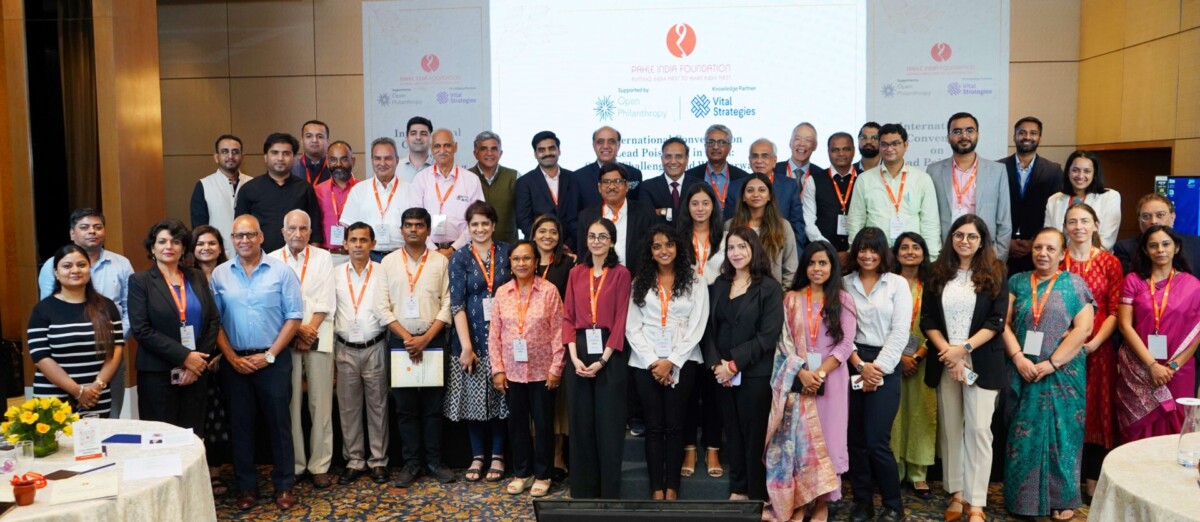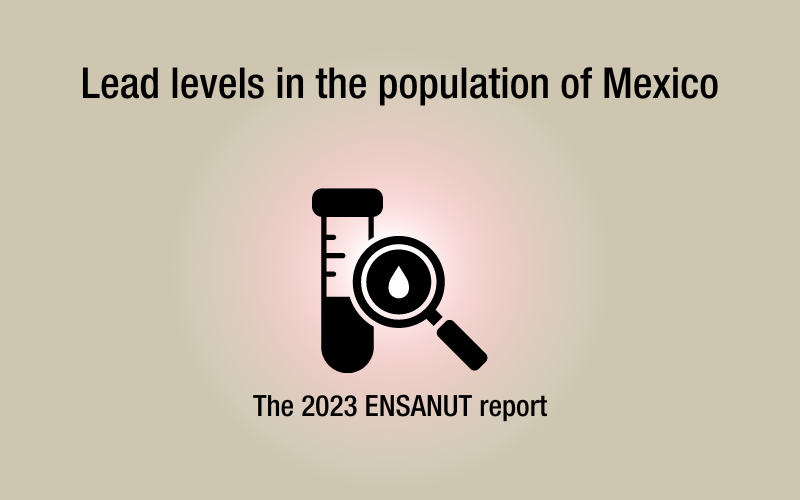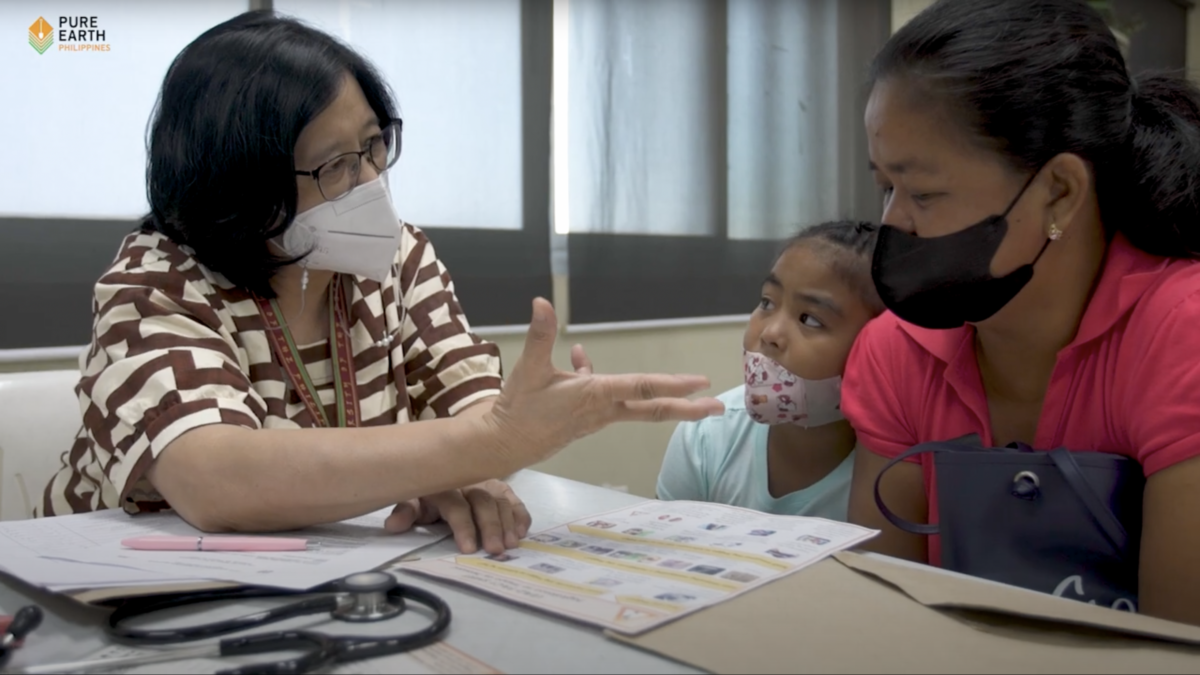
November 26, 2014, New York, NY–The Journal of Health and Pollution (JH&P) has just published its seventh issue, and will enter into its fifth year in 2015, reaching a milestone that will be celebrated by a growing group of researchers working to spotlight toxic pollution issues in poor and middle income countries. Published on a semiannual basis, the online journal of peer reviewed research and news is an important pipeline of crucial data and analysis of this global problem in countries that are often underrepresented in major studies. JH&P is the only journal focused exclusively on low and middle-income countries.
“Although toxic pollution is one of the biggest global threats, cleanup has been slow partly because there has been a lack of data to chronicle the scope and reach of problem. And this void of knowledge is greatest in poor and middle-income countries. Without proper data and studies, the toxic pollution problems plaguing these nations cannot be solved,” says Richard Fuller, president of Blacksmith Institute for a Pure Earth, publisher of the JH&P.
“Over the past four years, the JH&P has worked hard to close this information gap. We’ve been encouraging researchers, especially local experts, to collect and examine data in their communities, conduct studies and most importantly, publish their findings for the international community to see,” says Sandra Page-Cook, managing editor of the JH&P.
To encourage the sharing of information, JH&P offers free access to its content. There are also no page or other charges to authors and researchers hoping to publish.
Since the first issue in 2011, over 30 articles have been published in the JH&P on pollution issues in countries such as Cambodia, Senegal, Tanzania, and the Ukraine.
From a source that tracks the number of research documents contained in the Scopus database produced by country, the U.S. came up on top with over 300,000 documents produced in the field of environmental science. In comparison, Cambodia had only 220 documents, Senegal had 457, Tanzania had 1,062, and Ukraine had 4,078.
The latest issue #7 of the JH&P includes a paper on heavy metals in fishponds in Nigeria, testing of a mercury-free method for gold mining in Zimbabwe, and chromium exposure among tannery workers in Kenya.
Published by the Blacksmith Institute for a Pure Earth, an international nonprofit devoted to solving global pollution problems, the JH&P is part of a broader effort to expand research and understanding about the issue. In addition to the JH&P, the effort includes:
- a collaboration with AuthorAID, offering a free, five-week online course in research writing to environmental health researchers from developing countries. Over 100 researchers have been trained to date. Based on feedback, the course length may be doubled to ten-weeks next year.
- the offering of small research grants to researchers working on toxic pollution issues in low and middle-income countries. 19 grants worth $2500 each have been awarded to date. Next year the number of recipients will be expanded. Grantees have completed projects relating to heavy metal concentrations in Ethiopia, the health of coal-based sponge iron plant workers in India, and investigations of lead poisoning in Zamfara, Nigeria, among others. Note: grant recipients are not obliged to publish in the JH&P.
Contact:
- Magdalene Sim, [email protected]
- Angela Bernhardt, [email protected]





